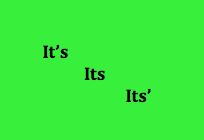 One of the most powerful tools that positions you as a professional is your command of the English language. That includes use of good grammar in all forms of communication. The next time you submit a resume to a prospective employer, give it one last review before submitting it. Grammatical error is a top reason why candidates do not get invited to an interview. Instead, the resume goes right into the round file.
One of the most powerful tools that positions you as a professional is your command of the English language. That includes use of good grammar in all forms of communication. The next time you submit a resume to a prospective employer, give it one last review before submitting it. Grammatical error is a top reason why candidates do not get invited to an interview. Instead, the resume goes right into the round file.
In celebration of National Grammar Day (today), I encourage you to set aside SpellCheck for just today and challenge yourself to read, review, analyze and pick apart what you have written and see if you can find those nasty grammatical errors without the help of modern technology.
To me, the most offensive grammatical error is the misuse of one of the tiniest words in the English language, its (which includes it’s and its’). I just received a news release from a colleague announcing a milestone event. In the first sentence, there it was, plain as day: “…celebrated it’s anniversary…” Like hearing nails on a chalkboard, my body began convulsing at the mere sight of it.
Professionals today, many of whom are college educated, even with advanced degrees, do not (sadly) know the difference among its, it’s and its’. So let me lay it out for you here once and for all.
It’s: As you learned in elementary school, an apostrophe indicates a contraction, like she’s (she is), isn’t (is not). In the case of it’s, this contraction stands for either it is or it has. Therefore, when you read a sentence and insert the words it is or it has and it does not make sense, then it requires no apostrophe because it is not a contraction. Case in point: My colleague’s news release should have read: …celebrated its anniversary.
Its: As stated above, its is a possessive form, showing ownership, not requiring an apostrophe because the meaning would change to what we’ve covered above. Think of other pronouns showing possession that all end in s, like his, hers, yours, ours.
Its’: Well, this is just plain silly. This does not even exist, so stop using it.
As you can see, there are only two correct solutions: it’s or its. It’s that simple!
With my pet grammatical peeve out of the way, consider the interesting twists and turns built into our language that only you, the composer, can control. Do you know the difference? They’re or their or there. Read or red. Hear or here. Make sure you’re (not your) selecting the correct word or your (not you’re) level of professionalism may slip a few notches. A misplaced apostrophe may seem small, yet it can have huge impact, like not getting a chance to interview for that job you really wanted. Imagine that.
